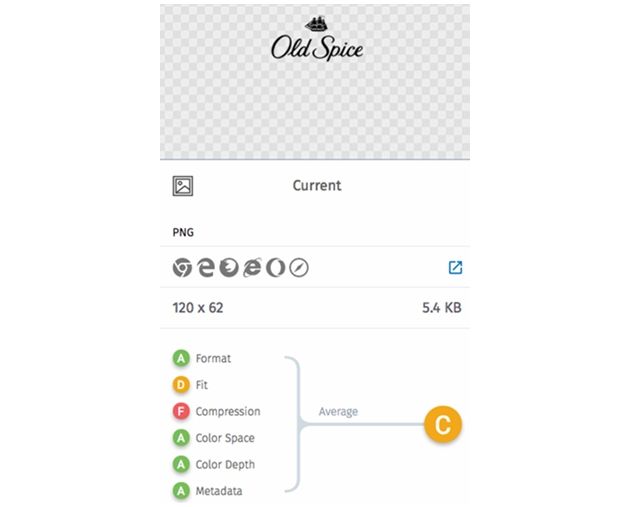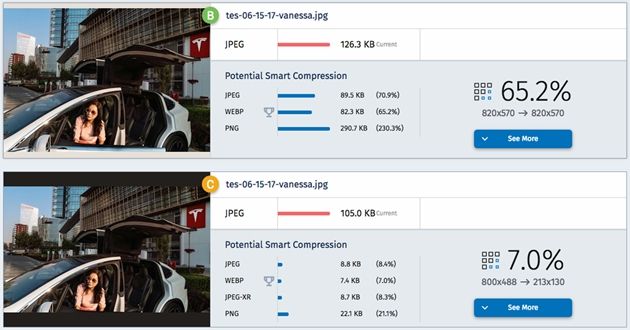Images that are not fully optimized by size and weight (the number of bytes they use up) have a negative impact on website load times. Publishers, such as news websites, do not have control over the ads they serve, exacerbating the problem.
So, are banner ads and their ilk, including images, killing website readership?
Poorly optimized media results in lost revenue
If your website takes longer than four seconds to load, you've already lost one-quarter of your audience. That fact presents a conundrum for news websites reliant on advertising dollars—because ads (and other video and image content) are rarely optimized, leading to longer website load times and therefore a higher bounce rate. Even the best-performing news outlets from a media optimization standpoint can benefit from reducing the weight of media on their sites.
Although in this case we're looking specifically at news organizations, it's important to note that a lack of media optimization plagues more than just the news media. Website SEO rankings fall because of slow load times, and e-commerce websites lose money when their sites aren't fast enough.
At Cloudinary, we looked at a few popular news outlets to see whether there are any similarities among what they might need to optimize. The Website Speed Test we used measures image weight. The letter grades that each outlet received are based on how much the images on the site weighed vs. how much they can be optimized.

Images and video make up about 80% of most websites' page weight, according to HTTP Archive, so even small adjustments to media can help improve site performance.
Because the pages of the websites we examined change daily, the results you'll see if you run the test will differ from the results for three of the websites we discuss below (and also for those listed in the above table).
Website tests reveal salient insights
Wall Street Journal
The images on The Wall Street Journal's homepage are, for the most part, optimized well. However, the site can still reduce the weight of its images and video to just 27% of their weight on the day we looked at the site's homepage.
Various advertisements on the site can be compressed to just one-third the size of the current asset, or even smaller.
The following is an example of an advertisement on the website. This piece of media, though small, can still be reduced to just 27.3% of its weight, suggesting that even slight tweaks to small image or video files can make a big difference on pageload times.
Fortune
The 20 images on the Fortune.com homepage can collectively be compressed to just 11.6% of their total weight. As an example, the following images are the same file. The second version can be reduced further because the size of the image required is much smaller than the size of the first image version. The first version receives a better rating because 65.2% is exactly the size needed in the context of that image.
While the top version of this image is fairly close to being compressed to an optimal weight, the version below can be reduced to a weight of just 7% of its current size. This screenshot illustrates how even using the same image in different locations can lead to drastically different optimization results.
Even an image as small as an icon on an advertisement offers plenty of room for improvement—and every image, no matter how much physical space it takes up on the page, adds weight to the page and increases its load time.
Recode
The collective media on Recode's homepage can be compressed to just 5.6% of the weight it is today. The story is similar to that of the WSJ and Fortune homepages: Many images are not the right size or format, or they are not compressed enough to provide the right image.
For example, this innocuous-looking and small-sized ad for Old Spice can be compressed and optimized so that it is the right image based on the device and browser:

What can be done?
Because their images and videos aren't optimized, publishers are suffering. Customers demand immersive experiences with multimedia on the pages they frequent, but they also expect those same pages to load quickly. And when those pages don't load quickly enough, customers leave the site. Without website visitors, it becomes difficult for publications to make money.
Optimizing images and videos can have a positive impact on bottom lines. However, reducing the weight of media on a website can be a painstaking process, especially when you consider all the images required to make the site responsive.
All three of the above-presented examples highlighted display ads—because although organizations can work to optimize the images they use on their own sites, ads present a different problem altogether.
Publications have no control over the image or video quality of the ads the site will serve (except over their own, house ads). Publishers must host ads to generate income, but unoptimized ads only lengthen pageload times, degrading customers' and site visitors' experience—undermining site revenue.
So, what can publishers do to improve their website load times, considering the limited control they have over ad optimization?
- Optimize house ads. Ensure the image size, format, and quality are optimized. An image or media management platform can help you optimize your house ad images.
- Optimize all other website images. Publishers must do what they can to optimize all their other images on their sites. Reducing the weight of those images will help mitigate the impact that poorly optimized ads have on the site's load time and customer experience.
- Offer guidelines. Provide guidance on your website for ad distributors and creators. Part of the problem is that publishers don't have control over non-house ads they serve. But if they start pressing for certain media formats or constraints, perhaps they can start to tip the scales in their favor.
Publishers that do not optimize their images and video stand to lose out on audience share and website visits, which ultimately leads to lost revenue. It's difficult enough optimizing individual media assets on a page—the process is painstaking and often manual—let alone on a mobile site and app, too.
Ads served on publishers' sites make this problem especially difficult because publishers have no control over the quality of the ad media. However, publishers can control their own media on their own sites.
* * *
Though ads can have a negative impact on website load times because they aren't optimized, the site's own content can also add to the dreaded slow load times. Fortunately, publishers can take at least part of image and video optimization into their own hands and start working to improve their website load times.
Today's customers demand lightning-fast websites and immersive customer experiences. Publishers would be wise to begin optimizing the assets they can, lest they lose viewers—and revenue.







